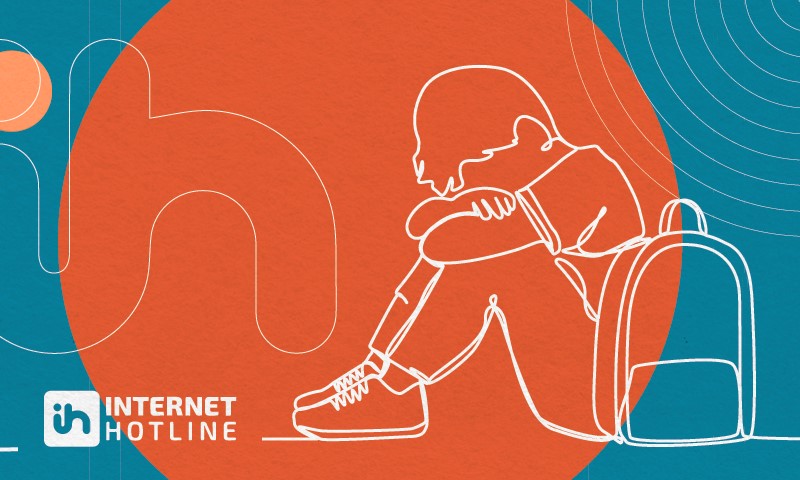Online harassment
Submit report
What can be reported?
In the category of online harassment, concerned parties can report on intentional, usually repeated online abuse taking place over an extended period of time, often in public. The harassment can be aimed at annoying, humiliating, shaming or even taking revenge on the victim. This may also include messages or posts that are defamatory or libellous towards the person making the report, even if the harassment is not a long-term harassment but a one-off incident.
It is important to note that this category also welcomes reports of cyberbullying. This is based on a perceived or actual dominant position, where the perpetrator intentionally and repeatedly harasses the victim over a prolonged period of time through electronic communication in order to annoy, humiliate, intimidate or take revenge. This is not limited in space and time, so the victim is constantly exposed to harassment, not just in the classroom during school hours. Since the conflict takes place on the internet, in the ”public eye”, it can be witnessed by a wider community or even the whole school in a matter of moments, which greatly increases the victim's sense of shame.
Examples
- Discrediting, intimidating and threatening users in the online space
- Cases concerning rumour-based websites
- Fake profile and profile hacking alerts
What happens to the report?
- First steps: In the first instance, we ask the person making the report to contact the service provider, the social media platform concerned first, if they have not already done so. We will provide the person making the report with all the information available, such as the contact details of the service provider and a link to the report form.
- Contacting the service provider, the social media platform: If thereporting person does not succeed and the problem persists, we will contact the content and/or hosting service provider and the social media platform concerned on the basis of the information provided by the reporting person, in particular the details of the complaint, and request the investigation of the content in question and, if necessary, the removal.
In cases involving minors or abuse of intimate images, the Internet Hotline (hereinafter referred to as “IH”) will act in the first instance, given the nature of the case. - Contacting the reporting person: In all cases where the report is not anonymous, i.e. the reporting person has provided their email contact details, we will inform the reporting person of the action taken. If necessary, we will ask for further information or clarification.
Before filing a report, please consider the following
- Have you reported your problem directly to the service provider, the social media platform concerned, such as Facebook, Instagram or YouTube?
- Do you have a specific URL or link to the offending content that would allow us to investigate your report?
- Do you have any other evidence, such as a screenshot?
In what situations are we unable to help?
If the matter has already been reported to the police and there is an ongoing investigation, we can only proceed once the reporting person has notified the investigation authority, which confirms that the Internet Hotline can conduct the procedure as detailed above. This is necessary because the removal of the content may compromise the success of the investigation.
Relevant legal standards
Act V of 2013 on the Civil Code
- Section 2:45 Right to honour and reputation
- Section 2:48 Right to one’s own image and recorded voice
Act C of 2012 on the Criminal Code
- Section 219 Misuse of Personal Data
- Section 222 Harassment
- Section 226 Defamation
- Section 226/A Production of Sound or Video Recording of a Defamatory Nature
- Section 226/B Publication of Sound or Video Recording of a Defamatory Nature
- Section 227 Slander
- Section 228 Desecration